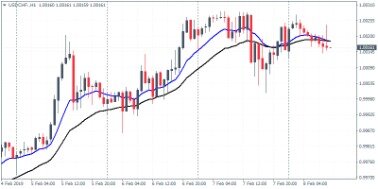Contents:


The company and the relevant stick exchange sign an agreement known as the e-IPO. Gina LaGuardia has more than 25 years of experience in senior editorial roles, and is an expert in personal finance topics, including banking and lending. She has created content for financial powerhouses such as Chase Bank, American Express Canada, First Horizon Bank, BBVA, and SoFi.
Equity Capital Markets refers to a broad network of financial institutions, channels, and markets that together assist companies to raise capital. An investment bank is a financial institution that acts as an intermediary in complex corporate transactions such as mergers and acquisitions. Investment banking is a type of banking involving organizing large financial transactions such as mergers or initial public offering underwriting. Capital markets groups help clients with their most critical and complex business issues, such as mergers and acquisitions. These corporate divisions may exist within larger financial institutions to help with specific services such as obtaining leases, acquiring other companies, or issuing debt.
- These are three key themes that link the many challenges retail, commercial and investment banks face in today’s rapidly evolving financial services industry.
- Companies must file statements with the Securities and Exchange Commission and other securities agencies and must wait until their filings are approved before they can go public.
- Capital markets groups are units of a company or investment firm that handle financial and banking services for a set of clients or customers.
- Capital markets may trade in other financial securities including bonds; derivative contracts such as options, various loans, and other debt instruments, and commodity futures.
In the 20th and early 21st centuries, many governments would use investment banks to organize the sale of their bonds. The leading bank would underwrite the bonds, and would often head up a syndicate of brokers, some of whom might be based in other investment banks. However, since 1997 it has been increasingly common for governments of the larger nations to bypass investment banks by making their bonds directly available for purchase online. Many governments now sell most of their bonds by computerized auction.
Mind the Gap: Women in Financial Services Leadership
The most common example is a stock exchange such as NASDAQ, trading shares from different companies amongst investors. It refers to the part of the market where the financial instructions mobilize the savings of the people and lend them long-term so that new capital can be raised in the country. A capital market is nothing but the process by which funds are borrowed and lent over a long period of time. The capital market can also be considered a marketplace where financial securities (stocks, bonds, and government-backed loans) are bought and sold.
This is prompting many countries to review the functioning of their capital markets to provide better conditions for financing private sector innovation, investment and growth. Capital market reforms are often supported by more competitive corporate governance regulations, including company law and securities regulation. The OECD reviews the functioning of capital markets, provides international comparisons and proposes how to improve corporate access to capital. This analysis is evidence-based and drawn from a broad spectrum of international experiences with improving national capital formation and private sector competitiveness.
What are Capital Markets?
During the last decade, technological advancements have resulted in a great boon for the capital markets definition capital market. So, when the company sells its shares to any financial institution like banks, insurance companies and so on it helps in raising funds quickly, economically, and efficiently. Such a company neither sells nor offers the securities largely to the public.
2023-03-30 TSX:JAG Press Release Jaguar Mining Inc – Stockhouse
2023-03-30 TSX:JAG Press Release Jaguar Mining Inc.
Posted: Thu, 30 Mar 2023 20:15:40 GMT [source]
Primary markets are open to specific investors who buy securities directly from the issuing company. These securities are considered primary offerings orinitial public offerings. When a company goes public, it sells its stocks and bonds to large-scale and institutional investors such as hedge funds and mutual funds. Capital markets may trade in other financial securities including bonds; derivative contracts such as options, various loans, and other debt instruments, and commodity futures. Other financial instruments may be sold in capital markets and these products are becoming increasingly sophisticated. Some capital markets are available to the public directly while others are closed to everyone except large institutional investors.
Capital Market Transactions
Typically, large volumes are put up for sale in one go; a government may only hold a small number of auctions each year. Some governments will also sell a continuous stream of bonds through other channels. The biggest single seller of debt is the U.S. government; there are usually several transactions for such sales every second, which corresponds to the continuous updating of the U.S. real-time debt clock. The majority of modern primary and secondary markets are computer-based electronic platforms.
If the shareholder chooses to let go of this offer then the public is allowed to purchase the shares. If the shareholder wants to purchase the shares then they will acquire more shares. This method offers investment opportunities to select some individuals. Capital market regulation is primarily intended to protect investors, insider dealings, creative accounting, and misuse of client money are some of the vices investors need protection from. Speculators want to buy futures contracts for the huge potential gains . If you’re a gold miner uncertain of where the gold price will be in six months, you may decide to sell the futures above to lock in a price of $2,000 per ounce now.
Various financial instruments are available on the capital market that allows economic agents to pool, price, and exchange risks. The primary function of this market is to deal with new securities, i.e. securities that are issued for the first time to a new investor. Businesses that are listed on stock exchanges are called public companies. As a public company, the business is required to have an investor base of a certain size and file audited financials with the SEC each quarter. If you buy the security on the secondary market, you are still owed payments issued by the company. That means principal and interest payments on bonds and dividend payments on stocks would make their way to your account.
Both the primary market and the secondary market host such transactions. The primary market is when a company directly issues the securities in exchange for capital. Barclays is a major player in the world’s primary and secondary bond markets. Compared to in the United States, companies in the European Union have a greater reliance on bank lending for funding. Efforts to enable companies to raise more funding through capital markets are being coordinated through the EU’s Capital Markets Union initiative. Capital markets are used to sell different financial instruments, including equities and debt securities.
There is less attention and information on private companies, making it difficult to invest in them, especially for smaller investors. In the private markets, there is less liquidity, meaning that it is more difficult to buy and sell securities. The secondary market is when the security holders trade with other investors in a transaction that is separate from the issuing company. It is one of the best source of finance, for the companies, and offers a spectrum of investment avenues to the investors, which in turn encourages capital creation in the economy. Capital markets are highly interconnected, so a disturbance in a capital market on the other side of the globe will likely impact trading in markets located in other countries. In addition, there are some tax benefits obtained from investing in the stock market.
Capital markets are supervised by financial regulators, such as the US Securities and Exchange Commission and the Bank of England. 84% of retail investor accounts lose money when trading CFDs with this provider. CFDs are complex instruments and come with a high risk of losing money rapidly due to leverage. Derivatives can get complicated, but they represent a huge market as well. They are versatile and can be structured and created to tailor features such as risk and return for other securities.
While equity market investors are more tolerant of risk as compared to their debt market counterparts, they are also focused on returns. As such, investors impatient with a company that has consistently produced negative returns may abandon it, leading to a sharp drop in its valuation. Raising capital through equity markets offers several advantages for companies. Private equity firms may use both cash and debt in their investment , whereas venture capital firms typically deal only with equity investments.
Companies issue stocks and bonds to raise money to grow their businesses. A capital markets group is a division within a larger company that uses its expertise in financial markets to provide financial services to specific types of clients. Capital markets groups can help companies meet a wide variety of financial goals such as the origination and execution of equity offering and the issuing of issuing debt. The money markets are used for the raising of short-term finance, sometimes for loans that are expected to be paid back as early as overnight.
Primary MarketThe primary market is where debt-based, equity-based or any other asset-based securities are created, underwritten and sold off to investors. It is a part of the capital market where new securities are created and directly purchased by the issuer. Secondary equity markets involve stock exchanges and are the primary venue for public investment in corporate equity. Many big businesses use the stock and bond markets to raise new capital for growth. Investors are compensated for the lack of liquidity and lack of information. From the company’s perspective, they can raise capital without the scrutiny and regulation that comes with being publicly listed.
A secondary market is a market where investors purchase securities or assets from other investors, rather than from issuing companies themselves. Capital markets describe any exchange marketplace where financial securities and assets are bought and sold. Capital market refers to a broad spectrum of tradeable assets that includes the stock market as well as other venues for trading different financial products. Examples of money market instruments include certificates of deposit , commercial paper, Treasury bills (T-bills), and banker’s acceptances. When a company or government issues short-term debt, it’s usually to cover routine operating expenses or supply working capital, not for capital improvements or large-scale projects.
By https://forex-world.net/ through different markets, it is possible for investors to actively trade stocks throughout the day. The money market refers to trading in very short-term debt investments. These investments are characterized by a high degree of safety and relatively low rates of return. Hybrid SecuritiesHybrid securities are the combined characteristics of two or more types of securities, usually both debt and equity components. These securities allow companies and banks to borrow money from investors and facilitate a different mechanism from the bonds or stock offering.

Short-term instruments include working capital loans, short-term loans. The primary equity market, where companies issue new securities, is divided into a private placement market, and a primary public market. In the private placement market, companies raise private equity through unquoted shares that are sold to investors directly. In the primary public market, private companies can go public through IPOs, and listed companies can issue new equity through seasoned issues.
À propos de l’auteur